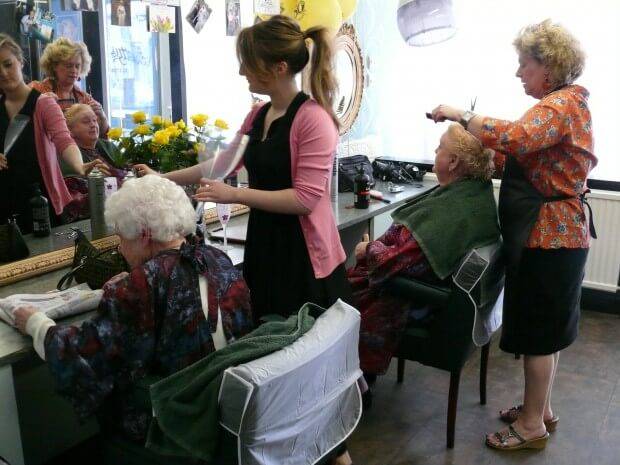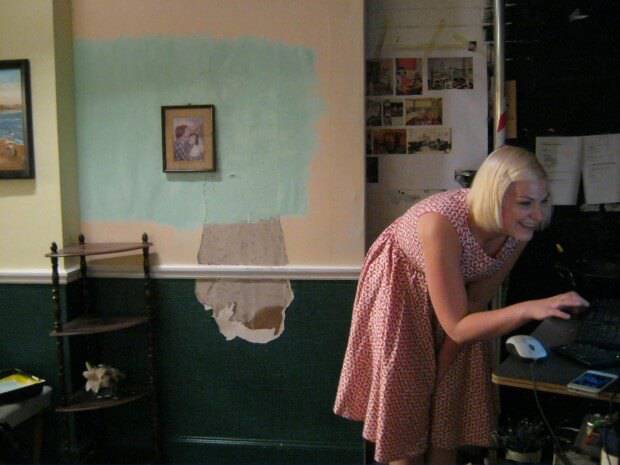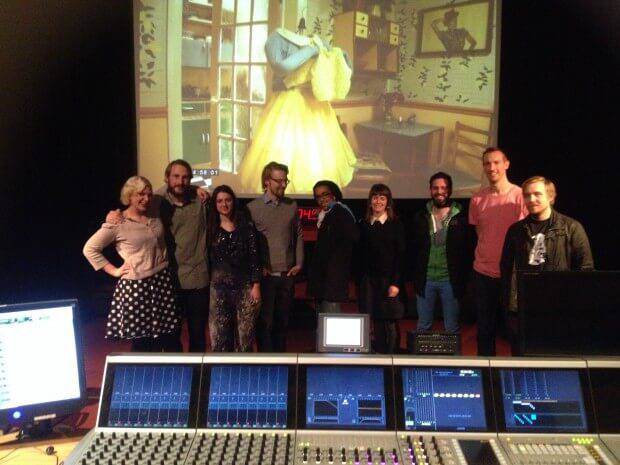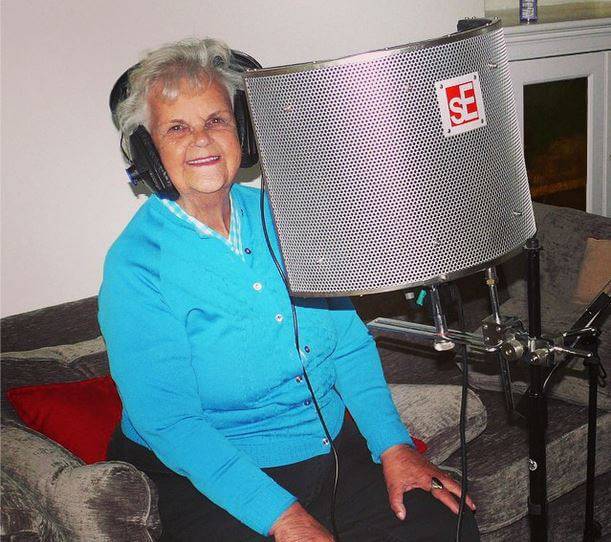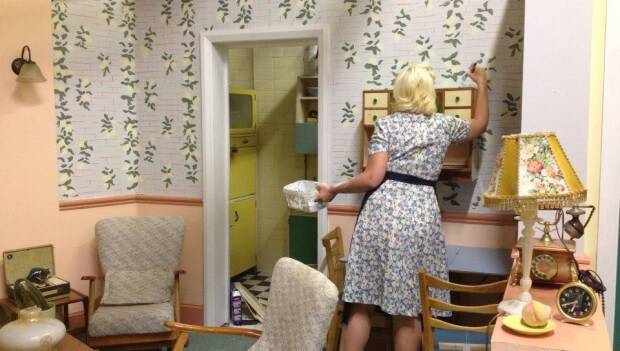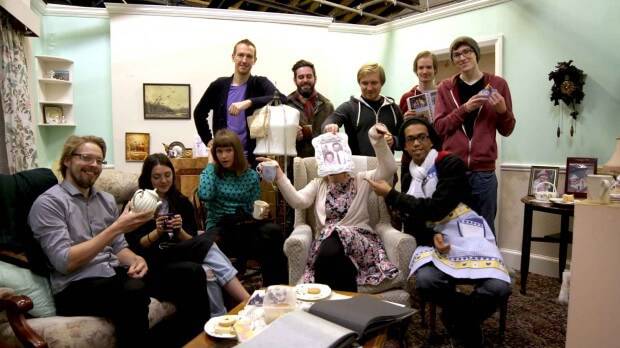Interview with ‘Mend and Make do’ Director Bexie Bush
Bexie Bush is amongst the latest bumper crop of NFTS graduates to develop an original idea with an organic vision. Her film Mend and Make Do has been screened across the world and makes great use of the animation technique of pixilation. A middle ground of sorts between stop-motion and live action, this technique is nothing new to Bexie who had been developing work like this since her first degree films at Farnham UCA and is now developing a real sense of herself as a director. Her biographical work depicts the life and times of the elderly in her local area, celebrating the incredible lives of society’s sometime forgotten generation of wise and witty people.
Mend and Make Do is a very natural progression from your previous short films like Betty’s and Britain, what do you feel was the major difference between these two previous films and this one in terms of your creative approach?
Betty’s and Britain are both lip sync films, which take a snapshot of people in places at a certain time, using mundane household objects to represent important discussions of everyday life between the protagonists. Both of these films have been compared to Creature Comforts as they use unscripted dialogue to characterise the animation. They were both made on a small budget whilst I was at Farnham UCA, shooting on location with very little lighting control.
Mend and Make Do has, I think, given me my own style as a director and has differentiated my work from others. I wanted to take a more narrative approach to the dialogue whilst still keeping the feel of a documentary. I like the idea of never seeing a character, so object representation is pictured through the imagination. The film still features my main protagonist, Lyn Schofield, but this time we exchanged the fly-away comments found in Betty’s or Britain for a very delicate and moving story of her life. Stefan Kaday (writer) had a big part in ensuring that the film still carried in a strong narrative.
In all of your films you have used the pixilation technique, what first prompted you to work in this way and what do you feel it brings to your films?
When working with people’s stories, I naturally think about what objects they have that not only act as a portrait but also represent a certain memory. When you walk into an empty house where someone once lived, you can see all their memories and personality through the decor and variety of objects they have collected throughout their life. I like the idea of these objects choreographing and performing their memories. Our designer, Isobel Dunhil, helped us to achieve this with her visualisation for the set, which is very authentic, and many of the props were hand crafted by Violet Elliot, our art director, who was present on set with dedication for the entire shooting process.
Your films are often categorised as documentaries, and use ‘found sound’ or repurposed interviews. How or where do you find these people with a wealth of tales to tell?
As a teenager I worked in my Nan’s hairdressers, Betty’s and was surrounded on a daily basis by wonderful elderly characters with a grand experience of life. For Betty’s I used a microphone to record random snippets of natural chatter and asked permission to use the dialogue in my film later. I found this was a great way to capture uninhibited conversation. In Britain I decided to take a different approach. In order to focus on certain topics, I fashioned a set of questions that I put up on a wall for Lyn and my Grandad to discuss. These two were a good pair to put together as my Grandad loves to discuss ‘life’ and Lyn is a very positive, chirpy character. I used a similar approach for Mend… but had the advantage of a wonderful Sound Designer, Neo Anilcar Peterson on the team.
Your subject matter also tends to look into the lives of the elderly, usually with nostalgia. What inspiration do you take from the older generation?
I guess this is because most of the time I have been surrounded by the elderly. Working in the hairdressers I have grown up around a wealth of humour, wisdom and advice. I think the older generation are often ignored but yet they have so much to share and know a few tricks about getting by happily. I am also very fascinated with the whole look style and way of the 1950s, so working with the elderly means I get to delve deeper into my favourite era.
Has Lyn seen the film, and how does she feel about it if so?
Yes, Lyn has seen the film and is very happy with it. She has become somewhat of a celebrity around Ainsdale village as the film has been screened locally to various community groups. Lyn was good friend to Betty and she is extremely enthusiastic to encourage me in any way to pursue my career. She also has a past in performing so she naturally enjoys speaking in front of a microphone.
I think it’s fair to say you live in a world of vintage, both in your own personal style and approach to film making – why is this?
I’m not sure if it is a phase or not but I have become progressively more 40/50s obsessed since exploring that era for my films. I am quite outgoing and love to dress up and the more research I do into the 40/50s, the more I love to ‘live’ the style. Vintage subject matter seems to go beautifully with traditional animation, as that is also becoming a vintage pastime in its self.
Mend and Make Do incorporates a range of different techniques, why did you choose to use more than one technique in this film?
I like to approach a film as an art installation. For Mend and Make Do I chose specific objects as visual metaphors to express the emotion and the story, so the technique had to constantly change to carry this across topics. Our Cinematographer Adrian Peckit was invaluable here. I like to experiment and change my technique to explore the possibilities of animation and optical illusion. I know this can sometimes be damaging to a story so I like to work closely with editors and writers to check the clearness of the screenplay. During the making of Mend and Make Do, I had the absolute pleasure to work with Pawel Slawek, our Editor who ensured that the story was told without pulling back on the visual metaphors.
The film is doing very well across the world, delighting festivals and audiences, how have you personally found people’s reaction to the film and yourself as the director?
It is always a wonderful feeling when people like your film but it’s even more personal when an audience falls in love with a character that exists in reality. It pleases me when people can recognise their own grandparents in Lyn’s story as that was the aim of the film. Although it is a very British film, we use subtitles during screening, as I want the story to be universal and connect worldwide.
You created Mend and Make Do at the NFTS, how did you finding the course and what’s next for you?
I’ve just graduated from the NFTS and it was an amazing two years. I could easily say the best two years of my life. The course was fantastic. We had great advice and workshops from Robert Bradbrooke, Paul Bush, Ginger Gibbons, Ossie Parker, Stuart Hilton and that’s just to name a few. It was great to learn from such experienced directors and not to mention the amazing tutors from all other departments. It wasn’t only the learning that was valuable but it was also the amount of like-minded people that became friends and colleagues for life. It was a great learning experience to work with a team and have our Producer, Timo Suomi taking care of the crew and schedules. Also, to have the added luxury of special VFX from Chris Chidlow, great post-production work from online/colourist Ross Allen and wonderfully evocative music from Composer Arran Price, all adds so may ingredients to the value of the film.
I am living in London with four graduates from the NFTS and working freelance on varied jobs. The current aim is to direct a commercial or a music video, but the long-term aim is to make documentaries or informative films about pressing issues. I am currently involved in a project headed by Dr. Joe Smith of the Open University called Stories of Change. “Exploring energy and community in the past, present and future through the stories of distinctive communities that have been under-recognised and under-researched in relation to energy debates, because narratives are concepts that everybody can gather around.”
How do you see your work developing?
I can see my work developing more into filmed documentary with animated expression, as I like how the two go together. I have a couple more ideas brewing related to the elderly. I love to include humour in my work and I want to tackle some stories with a controversial edge.
To learn more about Mend and Make Do you can visit the film’s official site at mendandmakedo.co.uk


